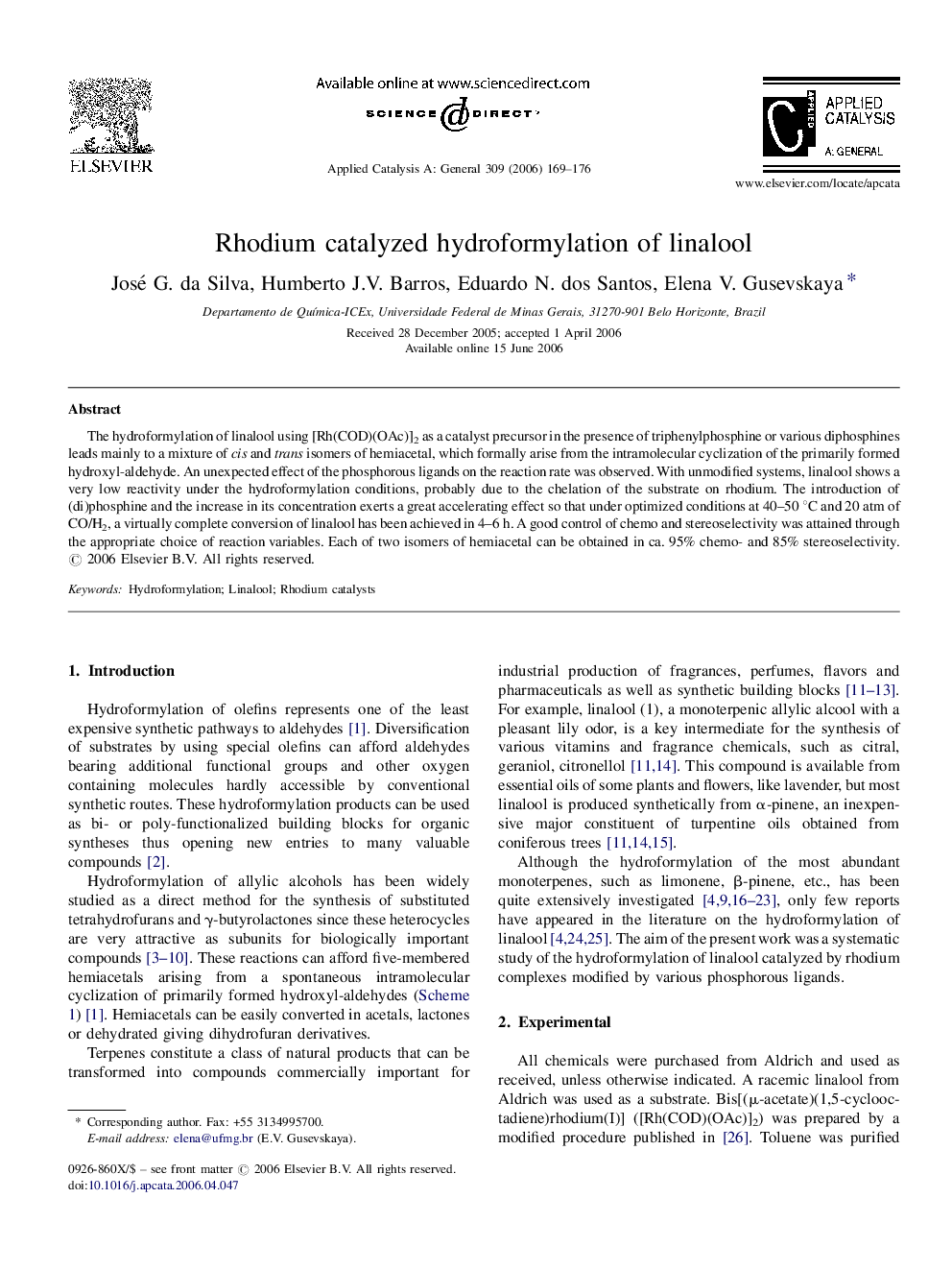| Article ID | Journal | Published Year | Pages | File Type |
|---|---|---|---|---|
| 44213 | Applied Catalysis A: General | 2006 | 8 Pages |
The hydroformylation of linalool using [Rh(COD)(OAc)]2 as a catalyst precursor in the presence of triphenylphosphine or various diphosphines leads mainly to a mixture of cis and trans isomers of hemiacetal, which formally arise from the intramolecular cyclization of the primarily formed hydroxyl-aldehyde. An unexpected effect of the phosphorous ligands on the reaction rate was observed. With unmodified systems, linalool shows a very low reactivity under the hydroformylation conditions, probably due to the chelation of the substrate on rhodium. The introduction of (di)phosphine and the increase in its concentration exerts a great accelerating effect so that under optimized conditions at 40–50 °C and 20 atm of CO/H2, a virtually complete conversion of linalool has been achieved in 4–6 h. A good control of chemo and stereoselectivity was attained through the appropriate choice of reaction variables. Each of two isomers of hemiacetal can be obtained in ca. 95% chemo- and 85% stereoselectivity.
